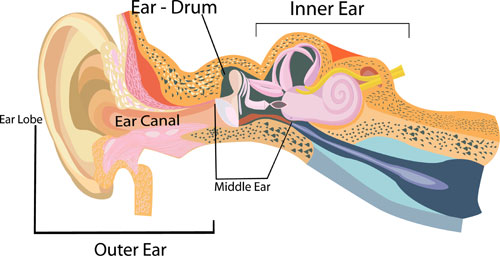Hearing Loss Quick Fact: What it is and what to do about it
Hearing loss can happen at any age. Ability Central's Quick Facts covers what causes hearing loss, how it is measured, and what you can do about it.
By Ability Central
14 December, 2022

As hearing loss makes headlines, it is essential to understand when a ringing in the ears is becoming something more. In this article, Ability Central answers:
- What causes hearing loss?
- What parts of the ear can be involved in hearing loss?
- What are the types of hearing loss?
- When should I seek help for hearing loss?
- Who should I see about my hearing loss?
What causes hearing loss?
The two primary causes of hearing loss are aging and chronic exposure to loud noises. Temporary hearing loss may be caused by the following:
- Diseases such as an ear infection or meningitis
- Trauma
- Certain medicines
- Excessive ear wax
What parts of the ear can be involved in hearing loss?

For hearing loss, the ear is considered to have five parts:
- Outer ear
- Middle ear
- Inner ear
- Auditory nerve
- Auditory system
What are the types of hearing loss?
The Centers for Disease Control and Prevention (CDC) categorize four primary types of hearing loss:
- Conductive Hearing Loss is when something stops sound from getting through the outer or middle ear.
- Sensorineural Hearing Loss is when there is a problem with how the inner ear or hearing nerve works.
- Mixed Hearing Loss occurs when both conductive and sensorineural hearing loss occurs.
- Auditory Neuropathy Spectrum Disorder is when sound enters the ear normally, but because of damage to the inner ear or the hearing nerve, the brain cannot interpret the information.
When should I seek help for hearing loss?
We measure hearing in decibels. The more hearing loss you have, the fewer sounds you can hear at a certain decibel, and the worse your hearing. For example:
- Normal hearing (no more than 25 decibels of hearing loss) means you can typically hear people breathing, insects buzzing, and leaves rustling.
- Mild Hearing Loss (between 26 and 40 decibels) means you won’t be able to hear people whispering, refrigerators humming, or water running in a stream.
- Moderate Hearing Loss (between 41 and 55 decibels) means you won’t be able to hear people working in a quiet office, rain falling, or coffee brewing.
- Moderate to Severe Hearing Loss (between 56 and 70 decibels) means you won’t hear people talking at an average volume, a dishwasher running, or people laughing.
- Severe Hearing Loss (between 71 and 90 decibels) means you won’t be able to hear doorbells or telephones ringing, traffic noises, or a vacuum cleaner.
- Profound Hearing Loss (between 91 and 100 decibels) means you won’t be able to hear someone shouting at you, a lawnmower, or a motorcycle.
Who should I see about hearing loss?
When it comes to hearing loss, there are several kinds of doctors and specialists available.
- A primary care physician is an excellent first step. They can direct you to a specialist that fits your needs.
- An otolaryngologist is a doctor who provides medical and surgical care, diagnosis, and treatment of the ear, nose, throat, and neck. Also called an ENT, these doctors will work with you to find out why you’re having trouble hearing and offer specific treatment options.
- An audiologist can test your hearing to identify the type and degree of hearing loss. They are licensed to fit and dispense hearing aids.
- A hearing instrument specialist is a state-licensed professional who conducts basic hearing tests and fits and dispenses hearing aids.
For more information, see Ability Central’s articles on: